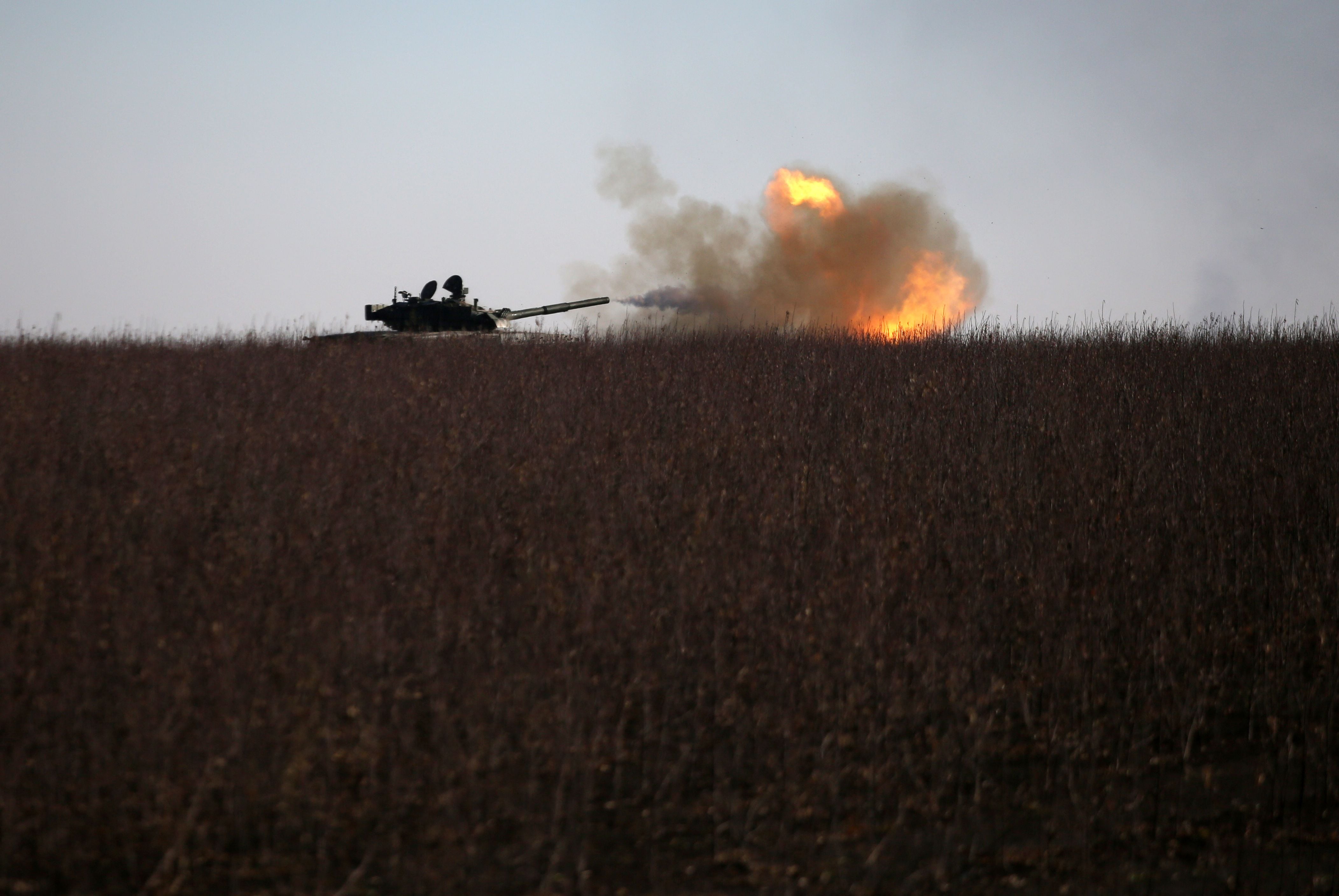One year ago, Russia invaded Ukraine, which began a ground war in Europe not seen at this scale in over 70 years. This simultaneous land, sea and air assault rocked not only Ukraine itself, but the West’s understanding of the global balance of power. The 118th Congress must adjust to this new reality. We learned lessons over the past year; we must not be forced to learn them twice.
In the future, our strategies must be resilient, not reactive. We must empower our allies and partners, and we must adjust to the realities of the modern battlefield brutally demonstrated in Ukraine.
As a nation, we have spent decades chasing solutions to already established threats — from the Cold War to the global war on terrorism. The challenges now facing the United States will punish us for reactionary defense strategies. Our adversaries are technologically advanced with powerful militaries that expand by the day.
Congress must account for the fact that the United States military may be called upon to deal with crises around the world and will inevitably struggle to do so. Beyond Ukraine, for example, Russia has demonstrated ambitions to militarize the Arctic, fragment the Western alliance and potentially reclaim the territories of the Soviet Union.
RELATED

Our nation will be best served by Congress and the Department of Defense working together to manage risk across multiple theaters — most importantly the Indo-Pacific and Europe. Congress must take into account how rapidly our European allies will be able to expand their defense-industrial bases and grow overall defense spending, for example, in order to determine how to effectively manage the levels of military support that we directly provide in the near, medium and long term.
Simultaneously, we must continue imparting the importance of Western military, financial and humanitarian support for securing Ukrainian victories to our European partners. The United States is sending Ukraine everything from night vision goggles to munitions and armor, recently including Abrams tanks. Additional long-range weapons from the United States, like the the Army Tactical Missile System, will also help the Ukrainian military present greater risk to Russia as Moscow considers new counteroffensives.
In Europe, we must continue to emphasize the importance of cohesive and collective action from NATO because Congress must anticipate that the United States will spend the next decade also countering spiraling tension with China in our priority theater — the Indo-Pacific — where no similar organizing alliance framework exists.
Recognizing this distinction, Congress must still act decisively to enhance the strength of our alliances and partnerships in the Indo-Pacific. A series of war games held by the Center for Strategic and International Studies recently confirmed this point and demonstrated that diplomatic and military ties between states proved a determining factor in preserving a peaceful future for Taiwan in the event of aggression from Beijing.
Our mature security relationships, like those we share with Japan and Australia, must deepen further. We must simultaneously nurture promising partnerships like those we are pursuing with the Philippines. To achieve this end, Congress can ensure that our regulatory frameworks that govern defense technology exports and foreign military sales are primed to support our near-term shared security objectives, for example.
Along these lines of effort, we must improve the interoperability of our weapons systems and the complexity of our regional joint exercises, and expand our cooperation with partner militaries, such as our recent effort to widen the scope of training that our National Guard provides to Taiwan. The Army’s inclusion of Australia and the United Kingdom in its Project Convergence 2022 exercise, for example, helped ensure that sensor and shooter networks between coalition partners are developed and improved.
As we work with coalition partners to prepare for the battlefields of today and tomorrow, there are also lessons to be learned from the Ukrainians’ innovative use of new and old military technologies. The conflict in Ukraine proved at least two key points about defense innovation that Congress must prioritize, although this list must doubtlessly expand.
First, the Ukrainian military’s cheap fixes to expensive obstacles and real-time problem-solving on the battlefield reinforce the fact that the United States must continue to reform clunky, complicated and outdated budget and acquisition systems at the Pentagon to deliver new tools and weapons systems to our service members at the speed of relevance. Mid-tier acquisitions that emphasize prototyping and fielding of technological innovations should be further accelerated. In the end, these innovations must be rapidly measured to ensure the program is either developed into a program of record, or killed.
Second, the effective use of low-cost commercial technologies and the repurposing of fielded military capabilities should be analyzed. Ukrainian soldiers have demonstrated how efficient simple modifications to drones and missiles can be on the battlefield. Repackaging Navy ship-killing missiles like the Tomahawk and SM-6 into the Army’s and Marine Corps’ mobile ground-launched capabilities is an example of proliferating good ideas across the joint force. Congress must focus on delivering more capability at lower costs.
From Ukraine, Congress has learned that exhausting “all other options” is no longer a sustainable or affordable plan. Threats must be evaluated holistically, strategically and with precision; then we must act.
Rep. Rob Wittman, R-Va., is the vice chairman of the House Armed Services Committee.








